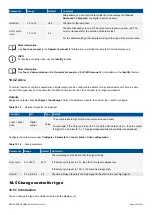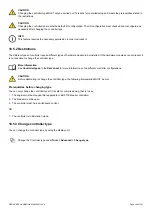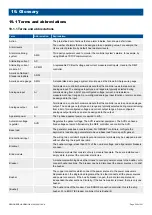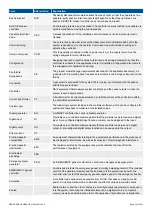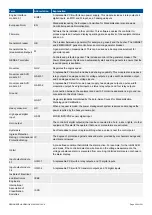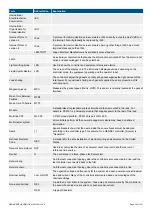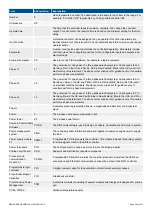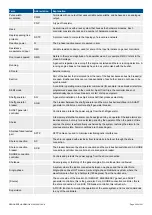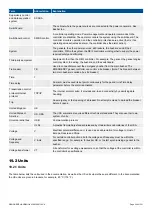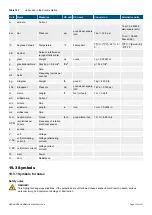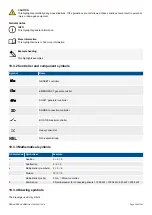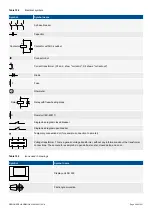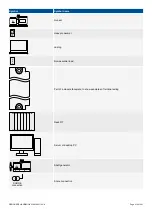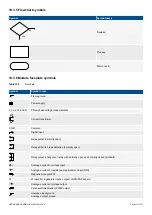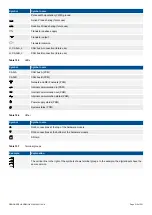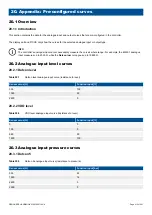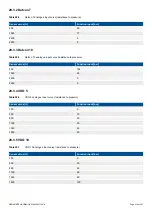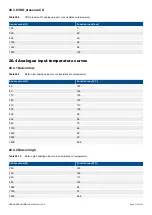
19. Glossary
19.1 Terms and abbreviations
19.1.1 Terms and abbreviations
Term
Abbreviation
Explanation
Action
The pre-defined set of actions that an alarm initiates. Also known as fail class.
Alarm levels
The number of alarms that can be assigned to an operating value. For example, the
Over-current protection by default has two alarm levels.
Alarm monitoring
system
AMS
Third party equipment used to monitor the controller system's alarms, for example, by
using Modbus TCP/IP communication.
Alternating current
AC
Alternating current
module 3.1
ACM3.1
A replaceable PCB with voltage and current measurement inputs. Used in the DEIF
controller.
American National
Standards Institute
ANSI
American wire gauge
AWG
A standardised wire gauge system, also known as the Brown & Sharpe wire gauge.
Analogue input
AI
Terminals on a controller hardware module that the controller uses to measure an
analogue input. The analogue input type and range are typically selected during
commissioning from a list of pre-configured voltage, current, and resistance
measurement input ranges. A pre-configured analogue input function or alarm can also
be assigned to the input.
Analogue output
AO
Terminals on a controller hardware module that the controller uses to send an analogue
output. The analogue output type and range are typically selected during commissioning
from a list of pre-configured voltage and current output ranges. A pre-configured
analogue output function can also be assigned to the output.
Apparent power
S
The 3-phase apparent power, measured in kVA.
Automatic voltage
regulator
AVR
Regulates the genset voltage. The AVR is external equipment. The AVR can have a
fixed voltage set point. Alternatively, the DEIF controller can control the AVR.
Base load
The generator supplies a constant load. For GENSET controllers, configure the
asymmetric load sharing parameters to have a base load from a specific genset.
Bi-directional input
The wiring to a controller's digital input and common terminals may be swapped around
without affecting the input's operation.
Blackout
The busbar voltage is less than 10 % of the nominal voltage, and all generator breakers
are open.
Blind module
A hardware module that consists of only a module faceplate. These are installed over
empty slots, to protect the controller electronics.
Breaker
A mechanical switching device that closes to connect power sources to the busbar, or to
connect busbar sections. The breaker opens to disconnect the power sources or to split
the busbar.
Busbar
The copper conductors which connect the power sources to the power consumers.
Represented on the single-line diagram as the line that connects all the power sources
and power consumers. If the bus tie breaker is open, there are two separate and
independent busbar sections. Similarly, if the bus tie breaker is closed, there is only one
busbar.
[Busbar]
The busbar side of the breaker. For a SHORE connection controller, this is the ship
busbar. For a BUS TIE breaker controller, this is Busbar B.
DESIGNER'S HANDBOOK 4189340911K UK
Page 500 of 521












